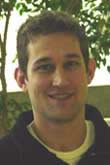 |
 |
 |
 |
 |
||
|
|||||||||
|
Getting my word in edgewise
For several years I had been determined to create an anthology of Indiana's environmental literature, but time for research came only in fits and spurts semester after semester. Finally, I realized that through a seminar at the Virginia B. Ball Center, I might be able to lure fifteen undergraduate researchers into my obsession with me. It worked, and I, perhaps more than anyone, am amazed by how much information we've uncovered. I expected to find plenty of writing about nature and the environment in Indiana, but I had no idea how very rich the texts would be—how vividly these writers would tell us what Indiana's early landscapes looked and smelled and felt like, and what the damage to that landscape would look and smell and feel like. These fifteen students and I have only skimmed the surface, though, in our anthology that became an encyclopedia that finally became something else altogether. We started out with a list of 136 authors whom I expected to touch on nature and the environment in Indiana. This semester, we worked our way through 50 of them. (Three, unfortunately, had to be eliminated. As much as we wanted to include Kurt Vonnegut, David Graham Phillips, and Muncie's own Emily Kimbrough, the students in charge of each of these authors found virtually nothing relevant to nature and the environment in any of their writings.) In the years to come, with other students and on a much smaller scale, I hope to continue exploring the writing of the 86 writers who remain on our list and see the number of author entries in this website expand. As is the case with any project of this magnitude, many individuals are responsible for its success. While I won't name all of them here, I do want to offer my personal thanks to a few key individuals and organizations:
My greatest thanks, however, go first to Virginia Ball and Joe Trimmer. Their vision for this amazing place, the Virginia B. Ball Center for Creative Inquiry, has allowed my students and me to engage in the kind of learning and teaching that none of us otherwise would have experienced—ever—in our academic careers. Finally, thank you to the fifteen
students who jumped in, head first, to a topic that most of them
hadn't even thought about before the fall of 2002. Their creativity,
perfectionism, and commitment to the content and execution of
this website are, ultimately, the only reason that this website
works so well, looks so good, and means anything at all. |
|
||||||||||||||||||||



 Overseeing the creation of "Our Land, Our Literature"
has brought together four of my great loves: nature, literature,
Indiana, and undergraduate students.
Overseeing the creation of "Our Land, Our Literature"
has brought together four of my great loves: nature, literature,
Indiana, and undergraduate students. 